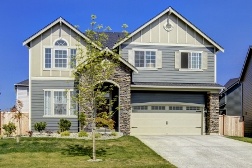The HARP Mortgage Program is Coming to an End Soon – Here’s What You Need to Know
 The United States government established the HARP program, otherwise known as the Home Affordable Refinance Program, to assist homeowners who are struggling with their mortgage payments. Initially, the program was founded in March 2009, and it has provided many homeowners with an easier route to adjusting their mortgage payments to make them more affordable. However, the program will be ending soon, and homeowners who have not yet taken advantage of the program and who intend to do so may need to act quickly.
The United States government established the HARP program, otherwise known as the Home Affordable Refinance Program, to assist homeowners who are struggling with their mortgage payments. Initially, the program was founded in March 2009, and it has provided many homeowners with an easier route to adjusting their mortgage payments to make them more affordable. However, the program will be ending soon, and homeowners who have not yet taken advantage of the program and who intend to do so may need to act quickly.
When Does the Program End?
The HARP mortgage program will officially end on December 31, 2015. If you intend to apply for a mortgage under this program, you must have your application submitted by this date. However, a closing date may extend into early 2016. There are special rules and eligibility requirements that must be met in order for you to take advantage of this program, and these must be in place before you submit a full application. Therefore, it is important that anyone who is interested in applying for a mortgage under the HARP program take time initially to understand more about the rules and eligibility requirements in place.
What Are the Requirements?
It is important to note that the HARP program is not suitable for all homeowners who wish to refinance, and special requirements must be in place. Just a few of the requirements include that you must be in good standing with your current mortgage with no late payments within the last six months. You also cannot have had more than one late payment within the last 12 months. In addition, you must be able to pay for the new mortgage payment, and the mortgage must be a Fannie Mae or Freddie Mac loan. These are just a few of the requirements, and you will need to work with a mortgage professional to ensure that you qualify for these and other requirements that are in place.
The HARP program has already helped many homeowners who have been struggling with their mortgage payments. While the program offers a permanent solution to homeowners by re-establishing a new mortgage payment amount, the program itself was only intended to be temporary in nature. Because it will officially end at the end of 2015, any homeowners who are still interested in taking advantage of the benefits of the HARP program should consider speaking with their trusted mortgage professional soon to learn more about the requirements and to begin the application process.

 Last week’s scheduled economic news releases were limited as no news was released on Monday or Tuesday, but good news did arrive in the form of a dip in mortgage rates for fixed rate loans. The National Association of Realtors® reported higher sales of pre-owned homes and FHFA reported that home price growth associated with mortgages held or backed by Fannie Mae and Freddie Mac held steady in May.
Last week’s scheduled economic news releases were limited as no news was released on Monday or Tuesday, but good news did arrive in the form of a dip in mortgage rates for fixed rate loans. The National Association of Realtors® reported higher sales of pre-owned homes and FHFA reported that home price growth associated with mortgages held or backed by Fannie Mae and Freddie Mac held steady in May. Homeowners who are thinking about listing their home for sale in the coming weeks or months may be focused on improving their home to help it sell more quickly, but there also may be a focus on adding value to the home in the process. While each home is unique, there are a few projects that most homeowners would benefit from. In fact, these are a few simple and easy projects that can typicaly be completed over the course of a weekend; that can add value and desirability to the home.
Homeowners who are thinking about listing their home for sale in the coming weeks or months may be focused on improving their home to help it sell more quickly, but there also may be a focus on adding value to the home in the process. While each home is unique, there are a few projects that most homeowners would benefit from. In fact, these are a few simple and easy projects that can typicaly be completed over the course of a weekend; that can add value and desirability to the home.